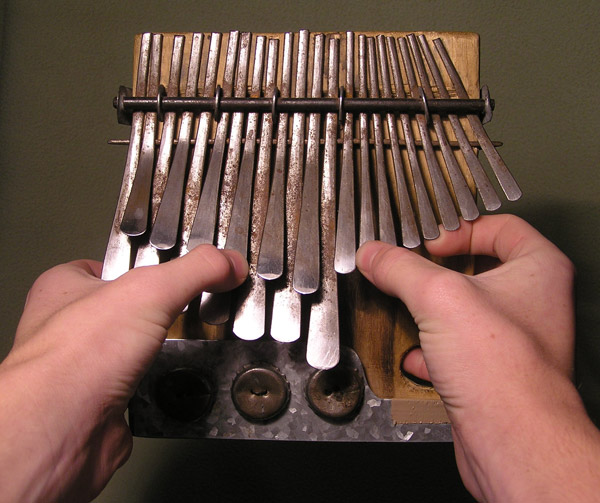m'bira

The African m'bira, also known as a thumb piano, is a type of lamellaphone, in which the sound is produced by plucking metal tongues or plates. It has from 22 to 52 thin metal tongues, arranged in two or three layers on a hardwood soundboard. The longest tongues are placed in the middle of the instrument, with the higher notes radiating outward. The soundboard acts as an amplifier and is usually placed inside a large gourd (deze), which is the resonator. Bottle caps or snail shells are often attached to the gourd or the resonator to create a buzzing noise as the mbira is played. Some m'bira have the tongues attached to a wooden box, which acts as a soundboard and resonator. Each metal tongue is plucked with the thumb and first finger on each hand. Several m'bira players may play together in an ensemble, and are often accompanied by drums and rattles (hosho).
M'bira music
The m'bira is played at religious ceremonies and social gatherings. The Shona people of Zimbabwe traditionally believe that m'bira music brings the world of the living in contact with the world of the spirits. Skilled m'bira players, or vana qwenyambira, play to persuade the spirits to transform members of the community into mediums, so that the spirits can counsel the living to protect them. Mbira music is cyclic and is constructed from several layers of interlocking melodic ideas, which combine to create the mesmeric effect believed to call the spirits.


